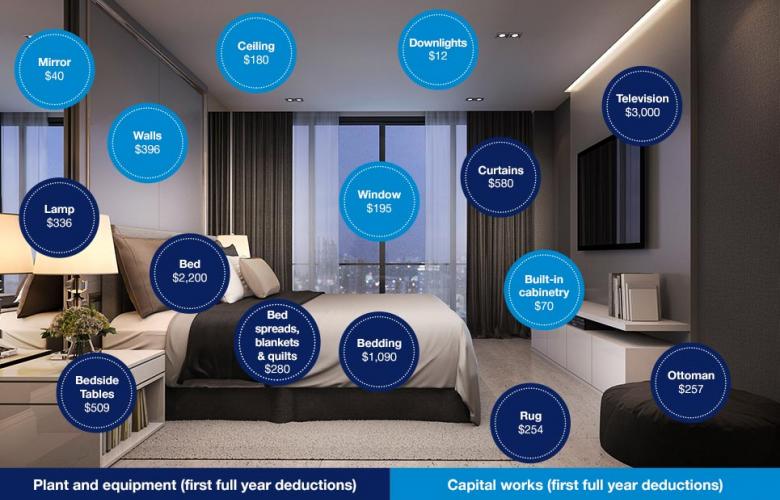See the depreciation deductions available in a hotel room
Contact
See the depreciation deductions available in a hotel room
Depreciation is one of the most commonly overlooked tax deductions by property investors and research suggests that around 80 per cent of hotel owners fail to maximise the deductions available to them and are therefore missing out on thousands of dollars.
Depreciation is one of the most commonly overlooked tax deductions by property investors. Most likely, this is because it is a non-cash deduction. That is, the owner does not need to spend any money in order to make a claim.
However, research suggests that around 80 per cent of owners fail to maximise the deductions available to them and are therefore missing out on thousands of dollars.
Depreciation refers to the wear and tear of a building over time and the assets contained within. The Australian Taxation Office governs legislation that allows the owners of income producing buildings to claim a deduction relating to this wear and tear.
As the graphic below demonstrates, hotel investors and operators are able to claim depreciation for a variety of assets in a standard hotel room.
This example illustrates the first-year deductions available for a selection of assets commonly found in hotel rooms.
While some of these assets may be obvious candidates for depreciation, a lot of hotel operators may not be aware that they are able to make legitimate claims for smaller, everyday items such as lamps and bedding.
Yet, as the values in the graphic show, the deductions for these assets can be quite significant and should not be overlooked.
For example, in the first financial year of claiming depreciation, the investor in this specific example could claim $1,090 for bedding alone and $509 for the bedside table.
In the graphic, the items with a light blue label are classified as capital works assets (relating to the structure of the building and items deemed irremovable) while the items with dark blue labels are considered plant and equipment assets (easily removeable assets).
The bed, lamp, ottoman, TV and bedding for instance are considered plant and equipment assets as they are removeable. The mirror, ceiling and built-in cabinetry are some of the structural items classified as capital works.
The items highlighted in this graphic represent just a selection of common hotel assets that attract a depreciation claim. There would be many more qualifying assets either not listed or not visible in this photo that would be uncovered during a site inspection by a specialist Quantity Surveyor.
It should also be noted that this graphic shows the first-year deductions only for each asset – there would be more to claim over subsequent years.
So if these assets accumulate such deductions in the first financial year alone, imagine the total deductions that can be claimed when every asset in every room in the entire hotel is accounted for, over the life of the property.
This equates to crucial cash flow that can help the hotel operators with their everyday hotel operations and expenses. And for investors, this means greater returns from their investment sooner.
According to Bradley Beer, the Chief Executive Officer of BMT Tax Depreciation, a depreciation claim can, in particular, help those hotel owners and operators experiencing negative cash flow to turn their hotel into a positive cash flow asset.
It is recommended that all hotel investors and operators speak with a specialist Quantity Surveyor to obtain a comprehensive depreciation schedule for their property.
This will help uncover all the assets that are eligible for depreciation.
Click here to visit the BMT Tax Dpreciation website.
This is a promoted article.
See the below articles also relating to Tax Depreciation.
Freehold vs. leasehold – what does this mean for hotel depreciation?







